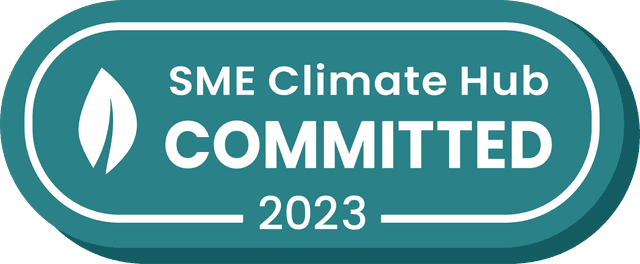The Big Mistake Business Owners Often Make With Their Website
)
By Martyn McDermott
4 min read
)
If you have built your website to be a brochure or portfolio for your business, you’re misreading where visitors often are in their buying journey — and leaving money on the table.
Your website should be your best salesperson. Working 24/7 to get buyers over the line. Not something to be bookmarked and returned too later.
If someone bookmarks your site “just in case”, I’m sorry, but that’s just the digital equivalent of all those old business cards in your desk drawer.
Different Tools. Different Jobs.
Think about how and when people typically receive a brochure.
They’re at an event. Standing in a showroom. Or in a meeting.
Generally, they’re already having a sales conversation. The interest is there. The decision’s halfway made.
The brochure just reinforces the pitch.
But your website?
It’s often experienced far earlier in the buying journey. Where buyers are far colder.
If someone — by some web-search miracle — lands on your site, they’re looking for something.
A solution. A spark. A reason to care.
Maybe they got your name from a friend or colleague.
Maybe they saw a LinkedIn post or an ad.
Either way, they’re not sold. They’re sniffing.
Your website is often their first real encounter with your brand.
They’re asking, “Can these people help me?”
And they’re not going to hang around while you slowly build to the point.
Most Sites Are Built for the Wrong Moment
And, too many websites are designed as brochures:
They talk about features, not outcomes.
They showcase work without context.
They lean on clever headlines that don’t say anything.
It’s all very polished and impressive — but incredibly vague to someone who doesn’t know you yet.
You wouldn’t walk onto a stand at an event and wait three minutes to be acknowledged. You'd be off to the next stand or the bar.
But online? That’s exactly what a lot of sites ask people to do.
The page loads. It looks lovely. But the language is fuzzy, the offer’s buried, and the CTA is forgettable.
No surprise when bounce rates spike and the sales team complains about “poor quality leads.”
Websites aren’t just about looking good. They need to be working smart, and using visual and messaging clarity, so that your website answers the key sales questions, right up front:
What problem do you solve?
Who is it for?
Why should I trust you?
What happens next?
It should pre-sell.
Pre-frame.
Pre-qualify.
It should make people feel like, “I’ve finally found someone who gets it.”
Because This Is What a Great Salesperson Does
Your website is a sales tool.
And it should be the best one you have.
It doesn’t sleep. It doesn’t need coffee. It never takes annual leave (you hope 😬).
But it does need to do what a good salesperson does in the first few minutes:
Disarm. Clarify. Reassure. Move the conversation forward.
It should tell the 'right people' they’re in 'the right place'.
It should help them quickly understand what you do, who you do it for, and why you’re better than the ten other tabs they’ve got open.
It doesn’t need to convert everyone.
Just the right ones.
And it needs to do it fast.
So Stop Treating It Like a Static Asset
Treating your website like a static brochure is like building a shiny showroom… and then not staffing it.
You don’t just need more visitors.
You need a site that knows how to greet, and what to do, with the ones you've already got.
A brochure or portfolio is great further down the funnel.
It helps validate a choice. It reinforces trust.
But your website is usually experienced before trust exists.
Very often, it has to build it from scratch.
And if it doesn’t?
They’re off to the next tab.
Written whilst ignoring a glossy brochure that’s been on my desk since 2022. Still lovely. Still unopened. Buried under notebooks and to-do lists.
&w=64&q=10)
&w=64&q=10)



